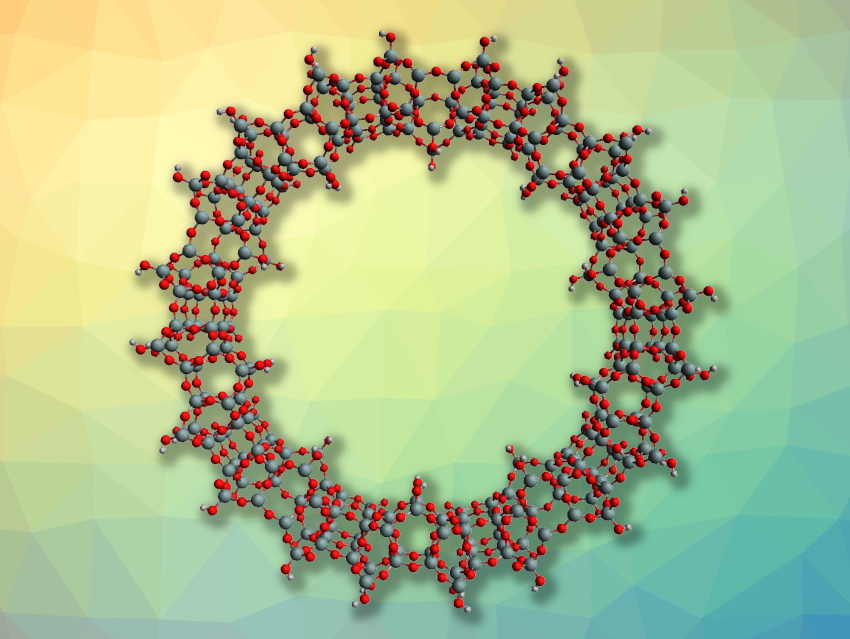Zeolites are porous aluminosilicate materials. They have applications, e.g., in adsorption and catalysis. Hierarchical zeolitic materials that include both micropores and mesopores could be useful for catalytic applications. They can, for example, be created by etching mesopores into 3D zeolites or by using structure-directing agents in the synthesis of 2D zeolite nanosheets.
Tom Willhammar, Stockholm University, Sweden, Christopher W. Jones, Sankar Nair, Georgia Institute of Technology, Atlanta, USA, and colleagues have prepared quasi-1D hierarchical zeolites for the first time, namely, nanotubes with zeolite walls (pictured). The team first synthesized a structure-directing agent called BCPh10Qui composed of a central biphenyl unit, decane-based chains, and quinuclidinium end groups. This compound was then used in the hydrothermal synthesis of a zeolite, followed by calcination to remove the structure-directing agent. The synthesized zeolite forms nanotubes, which was confirmed using transmission electron microscopy (TEM).
According to the researchers, the structure-directing agent’s chain-like shape with aromatic groups that are capable of π-stacking and the bulky end groups likely contribute to directing the formation of a microporous, cylindrical zeolite wall. The team suggests that different zeolite nanotubes might be accessible by tuning the structure-directing agent and the reaction conditions.
- Single-walled zeolitic nanotubes,
Akshay Korde, Byunghyun Min, Elina Kapaca, Omar Knio, Iman Nezam, Ziyuan Wang, Johannes Leisen, Xinyang Yin, Xueyi Zhang, David S. Sholl, Xiaodong Zou, Tom Willhammar, Christopher W. Jones, Sankar Nair,
Science 2022.
https://doi.org/10.1126/science.abg3793




